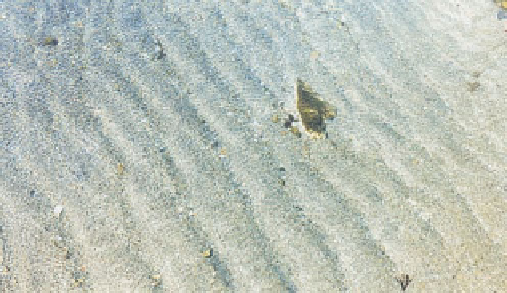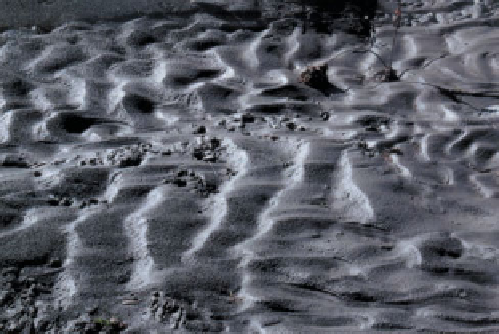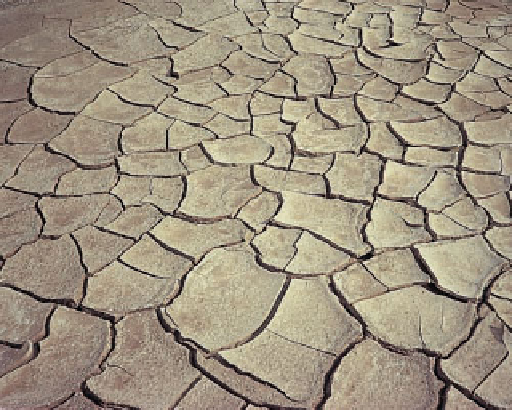Geology Reference
In-Depth Information
◗
Figure 6.25
Current and Wave-Formed Ripple Marks
a
Current ripple marks form in
response to currents that fl ow in
one direction, as in a stream. The
enlargement shows the cross-beds
in an individual ripple.
c
The to-and-fro motion of waves in shallow water yield
wave-formed ripple marks.
d
Wave-formed ripple marks in sand in shallow seawater.
b
Current ripple marks that formed in a stream channel. Flow was
from right to left.
◗
Figure 6.26
Mud Cracks Mud cracks form in clay-rich sediments when they dry and contract.
Image not available due to copyright restrictions
a
Mud cracks in a present-day environment.
Clams with heavily constructed shells typically live in
shallow turbulent seawater, whereas organisms living in low-
energy environments commonly have thin, fragile shells. Ma-
rine organisms that carry on photosynthesis are restricted to
the zone of sunlight penetration, which is usually less than
200 m. The amount of sediment is also a limiting factor;
for example, many corals live in shallow, clear seawater be-
cause suspended sediment clogs their respiratory and food-
gathering organs, and some have photosynthesizing algae
living in their tissues.














Search WWH ::

Custom Search